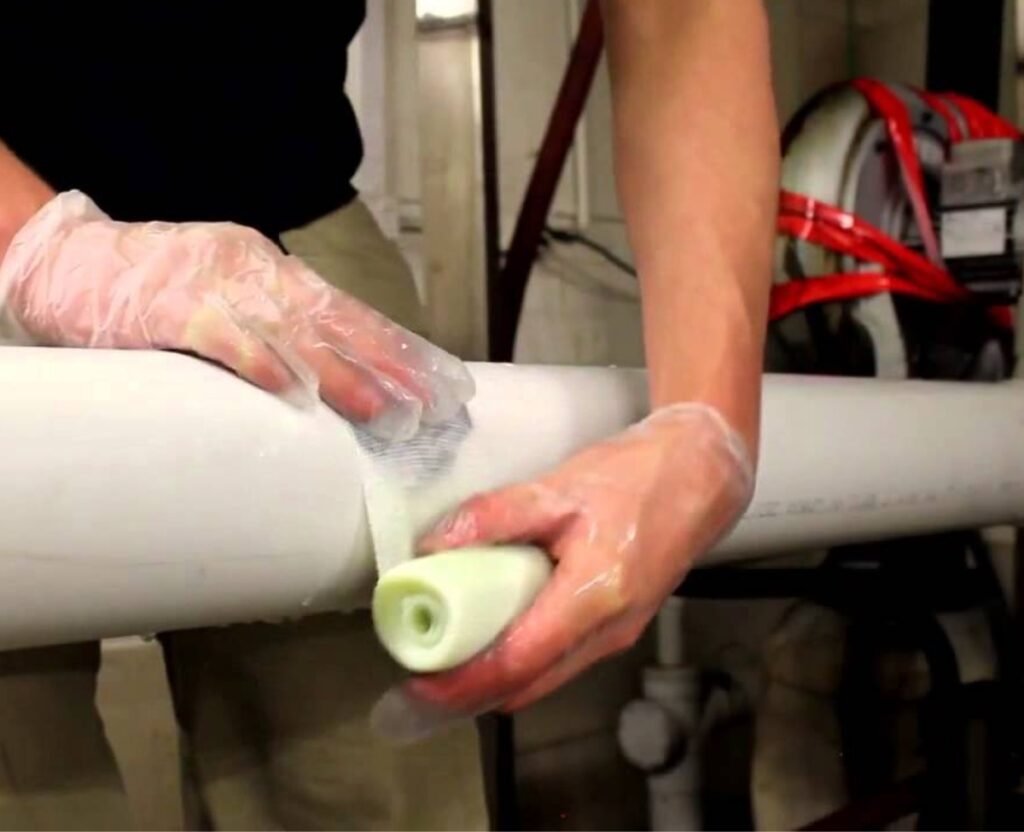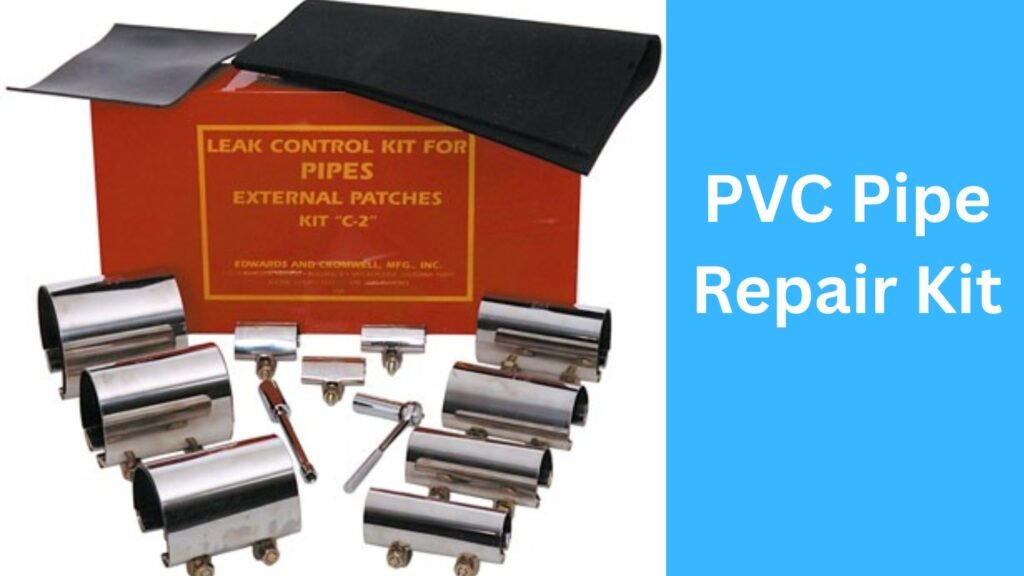Industrial and domestic applications depend heavily on PVC pipes and PVC Pipe Repair Kit for their fundamental operations. The material stands strong during usage because of its lightweight design and affordable price. Eventually PVC pipes begin to crack as well as start leaking over time.
Experts highlight PVC pipes for their practicality. According to studies, their toughness withstands heavy use. However, leaks arise from pressure, poor assembly, or seasonal freezing. Proper repair tools and methods ensure lasting results.
The repair process for PVC pipes remains straightforward by using proper methods. Detecting leaks at their onset provides both time and financial benefits to users. The repair kit will enable you to handle plumbing emergencies at all times. Promptly handling necessary repairs maintains efficient plumbing operation that remains trouble-free.
How to Repair PVC Leaks by a PVC Pipe Repair Kit
Leaks often lead to home damage through spills. The repair process remains straightforward after gaining knowledge about the necessary steps. Begin with testing the nature of the leak. Next, pick the right tool for your repair. Always shut off the water supply before starting.
Common Causes of PVC Leaks
PVC pipes are strong. Still, leaks happen. Here are the top reasons PVC pipes leak: Wear and tear: Over time, pipes weaken and break. Improper installation: If fitted poorly, joints can loosen.Weather changes: Freezing causes cracks.Plumbing pressure: High water pressure damages pipes.
Signs of PVC Leaks
Watch out for these signs of a leak:
- Water stains on walls or floors.
- A sudden drop in water pressure.
- Mold or mildew near pipes.
- Dripping sounds or visible moisture.

How to Fix Leaky PVC Pipe, Fittings, and Joints by PVC Pipe Repair Kit
Several effective methods exist for fixing PVC pipes. Choose the method based on the damage type. Below are steps using common tools.
Use Fiberglass Resin Tape and Cloth
Fiberglass resin tape is great for small leaks. Follow these steps:
- Turn off the water.
- Clean and dry the pipe.
- Sand the leaking area slightly.
- Wet the resin tape.
- Wrap it tightly around the pipe.
- Wait 30 minutes for it to set.
Use Epoxy Putty
Epoxy putty seals cracks permanently.
- Clean the area.
- Knead the putty until soft.
- Press it into the crack.
- Smooth the surface.
- Wait 20 minutes to cure.
Use Rubber and Silicone Repair Tape
This tape is helpful for temporary fixes.
- Dry the pipe.
- Wrap the tape tightly around the damage.
- Cover an extra inch beyond the leak.
- Secure it with pressure.
Replace the Pipe and Fittings
If the pipe is broken, replacement is the solution.
- Turn off the water supply.
- Cut out the damaged pipe with a saw.
- Clean and smooth pipe edges.
- Apply primer and PVC adhesive to new fittings.
- Attach the fittings and test after drying.
Can PVC Leaks Be Repaired With Glue?
Yes, PVC adhesive glue fixes minor issues. This method is temporary. It works best for small cracks. For permanent solutions, use epoxy or replace the section.
How to Remove a PVC Pipe Fitting After It Is Glued
Removing glued fittings can be tricky. Follow these methods:
- Cut the pipe: Use a saw. Cut at least an inch below the joint.
- Heat the joint: Use a heat gun to soften the glue. Then, twist the pipe apart carefully.
- Twist removal: Apply torque gently until the fitting loosens.
The Bottom Line
PVC repair is simple with the right steps. Get your tools ready. A quick repair saves you from bigger issues.
How to Patch PVC Pipe Using a Kit
PVC repair kits come with special tools. Here, we’ll explain how to use them effectively.
Understanding PVC Pipe Damage
Pipes face different types of damage:
Cracks from freezing.Holes from wear.Joint leaks from improper glue work. Proper identification of the problem ensures effective repairs.
Essential Tools and Materials
Always have these on hand:
- Epoxy putty.
- Fiberglass tape.
- Rubber tape.
- PVC cement.
- Sandpaper or a file.
- Pipe cutter.
Epoxy Putty Patching
Epoxy works best on small cracks. Clean the damaged area. Apply the putty to cover the crack. Smooth the surface and wait to cure.
Fiberglass Resin Tape Repair
This tape works for broken sections. Dampen the tape, then wrap the pipe. Allow it to harden for 30 minutes.
Rubber and Silicone Tape Sealing
Tapes fix small leaks quickly. Secure layers over the leak. Stretch the tape firmly for a tight seal.
PVC Cement and Coupling Replacement
When cracks are large, replace the pipe. First, measure and cut the pipe. Use a coupling joint to attach the new section securely.
Compression Fitting Application
Compression fittings do not need glue. They are simple push fittings that seal the pipe. These are long-term solutions.
Preventive Maintenance for PVC Pipes
Regular maintenance keeps pipes in top shape.
- Inspect for cracks monthly.
- Insulate pipes in cold areas.
- Avoid high water pressure.
- Use compatible glue for joints.
When to Call a Professional
Some leaks require experts. Call a plumber when:
- The main pipe is damaged.
- Joints leak too often.
- Pipes are hard-to-reach.
FAQs on PVC Pipe Repair Kits
Why use a PVC repair kit?
It has all the tools needed for quick fixes.
Can damage occur after repair?
Not if repaired correctly. Use high-quality materials.
Are PVC maintenance tips enough?
Yes. Regular care prevents major problems.
Conclusion
PVC pipes are essential for modern homes. Breaks and leaks happen. Tackling them early lets you avoid hefty costs. Always keep a repair kit handy. Be ready to act and manage leaks effectively. A little effort now prevents much trouble later.


szZAz npvcbQd ZGmuOm yKsZJ
Pingback: The Complete Guide to PVC Pipe Repair Kits - INSCMagazine